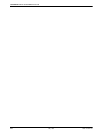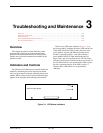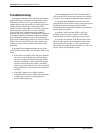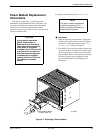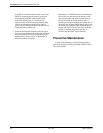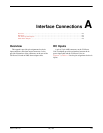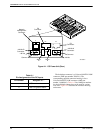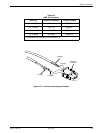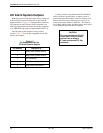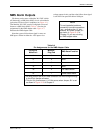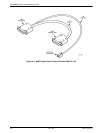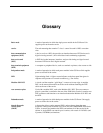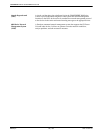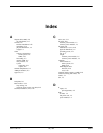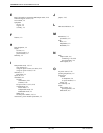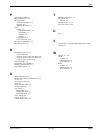
Glossary-13000-A2-GB41-40 May 1998
Glossary
Basic mode A mode of operation in which the single power module in the CO Power Unit
supplies power to the entire carrier.
carrier The rack mounting that contains 17 slots: 1 control slot and 16 DSU or modem
slots.
data communication
equipment (DCE)
A device, such as a DSU, that provides an interface between a DTE device and a
digital or analog network. (Also called data circuit-terminating equipment.)
data service unit
(DSU)
A DCE device that interprets, interfaces, and provides timing and signal control
between a DTE device and a digital network.
data terminal equipment
(DTE)
A computer or peripheral device, such as a terminal or printer; a data source or sink.
Independent mode A mode of operation in which each power module in the CO Power Unit supplies
power to one-half of the carrier.
LED Light-emitting diode. A light or status indicator on the front panel that glows in
response to the presence of a certain condition (e.g., Fan Alarm).
Modular 3611 DSU A circuit card that contains ‘‘gold finger’’ contacts on its rear edge. A modular
DSU can be removed from the front of the carrier without disturbing the DTE
cables at the rear of the carrier.
rear connector plate Used with a modular DSU, such as the Modular 3611 DSU. The rear connector
plate is a panel that is attached to the rear of the 3000 Series Carrier. It contains two
DTE connectors and functions as an interface between the Modular 3611 DSU and
the DTE.
Redundant mode A mode of operation in which both power modules in the CO Power Unit supply
power to all the slots in the carrier.
shared diagnostic
control panel
(SDCP)
A feature that allows carrier-mounted DSUs and modems to share the same
diagnostic control panel. Installed at eye-level into one COMSPHERE 3000 Series
Carrier, it controls and monitors the DSUs and modems in all the carriers in the
cabinet. A single SDCP can control up to 8 carriers, with a total of 128 DSUs (and
if present, 128 DBMs) and modems.



